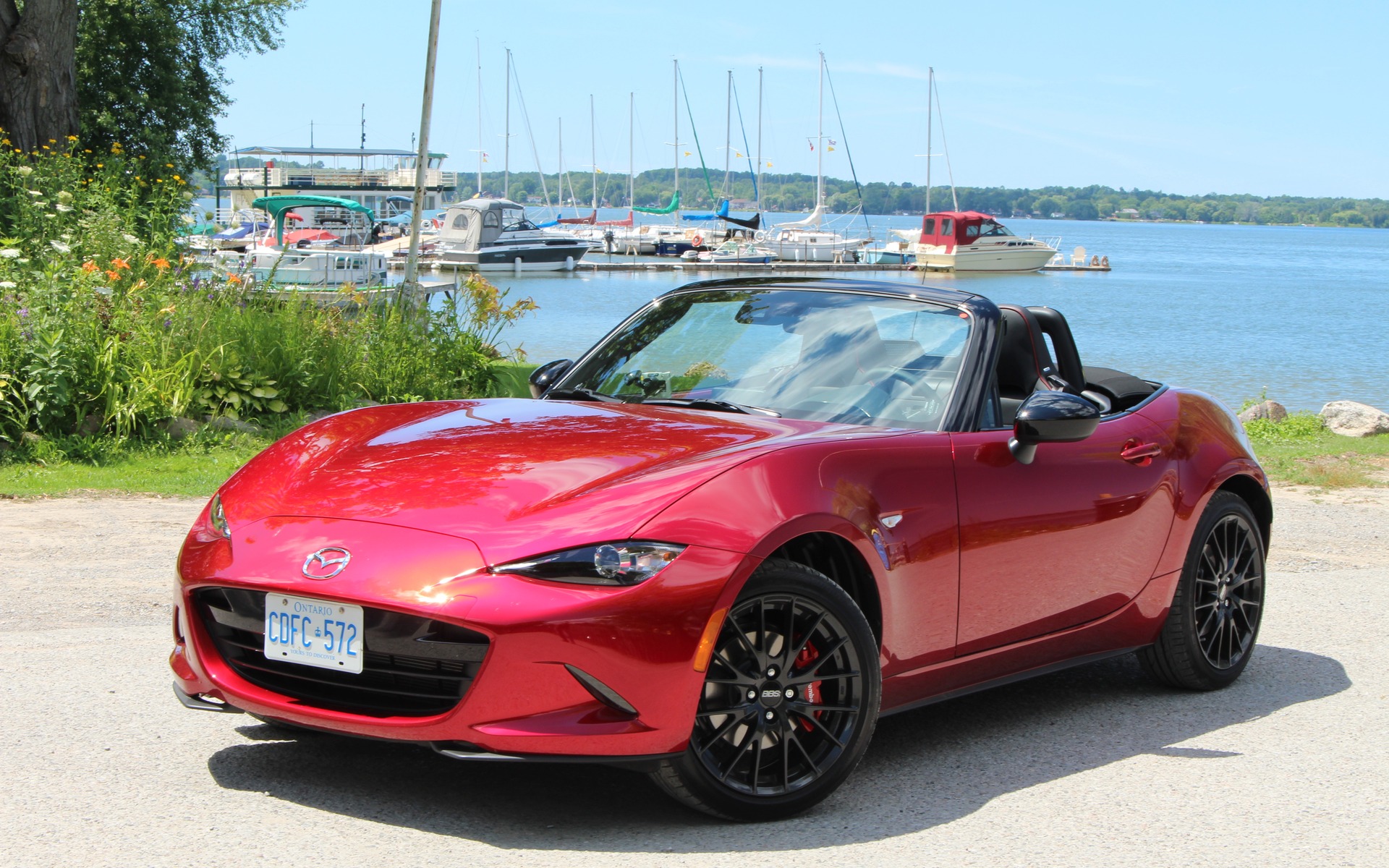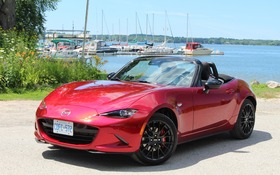2019 Mazda MX-5: Even More Exciting

| Strong points |
|
|---|---|
| Weak points |
|
TORONTO, Ontario – Since it first appeared on the market in 1989, the little Mazda MX-5 has won the hearts of many driving enthusiasts across the globe. The Miata, as it was known in the beginning, celebrated its 26th anniversary in 2015, just before receiving a total redesign. This fourth generation, which bears the internal code ND—the first three generations were called NA, NB and NB—, was introduced for the 2016 model year, and it’s already getting some changes. Oh, nothing major, but enough to better appreciate this two-seat sports car’s driving dynamics.
The most important change is found under the hood. Thanks to extensive modifications, its SKYACTIV 2.0-litre four-cylinder engine now more powerful. Who wouldn’t be happy with that?
- Also: Refreshed 2019 Mazda CX-3 Now on Sale; Pricing Announced
- Also: 2018 Mazda6: New and More Upscale
Curiously, instead of waiting for the launch of their new generation of SKYACTIV-X engines, Mazda’s engineers tweaked the existing powertrain. Bigger intake valves and manifold allow the engine to breathe more freely, while lighter pistons and connecting rods were chosen as well as a crankshaft with reshaped counterweights reduce vibration. A new exhaust system was also installed, providing the 2019 Mazda MX-5 with a slightly nastier sound, without being too noisy.
The modifications don’t stop there, as there are too many to list. What we need to know is that the MX-5’s engine now produces 181 horsepower, up by 26 compared to the 2016-2018 MX-5s. Peak torque rises from 148 to 151 pound-feet, which seems negligible, but the torque curve is wider at high rpm. In other words, higher torque is maintained from 4000 rpm up to the engine’s redline—which rises from 6800 to 7500 rpm—and allows it to run out of breath less quickly.

Right off the bat, we can feel the difference. Not as much at blast-off, but once we reach the second and third gears, the MX-5 flaunts its newfound energy. And with a wider power curve, downshifts during normal driving won’t be as frequently needed.
Not only is the engine more powerful, but Mazda Canada confirms that it’s more efficient too, although the difference is marginal. Equipped with the six-speed manual gearbox, the 2019 edition boasts city/highway numbers of 9.0/7.0 L/100 km, and with the six-speed automatic, the numbers are 9.0/6.6 L/100 km. Globally, that’s an improvement of about a tenth of a litre.
The manual transmission also gets a dual-mass flywheel that, according to the automaker, helps reduce powertrain noise, vibration and harshness. On the other hand, the clutch pedal loses a little lightness compared to a single-mass setup. We must really drive the 2018 and 2019 editions back to back to notice the differences.
What’s clear is that if buyers were hesitating between the purchase of an MX-5 and a Fiat 124 Spider, which share the same platform, but are equipped with different powertrains, Mazda has just made the decision a lot easier. It’s worth noting that the power increase for 2019 has been achieved without adding a turbocharger, which could have potentially made the engine more fragile and raised its fuel consumption.
We’ve written a lot about the powertrain so far, but the 2019 Mazda MX-5 benefits from other changes too. The rearview camera is now standard fare—now a requirement by law—and has been installed directly on the rear bumper. It’s subtle, and it’s about the only way to distinguish a 2019 from the 2016 to 2018 editions.
The GX trim level has been ditched in favour of a better-equipped GS, but that will cost less than the 2018 GS. The latter is back for 2019 under the GS-P trim, while the top-shelf GT soldiers on without any major changes.
As standard, other than the rearview camera, we find the brand’s Smart City Brake Support system, lane departure warning, automatic high beams, Mazda Connect infotainment system with seven-inch touchscreen and multifunction dial, two USB ports (instead of one) and—a welcome addition—a telescopic steering column. It’s now easier to find an ideal driving position in the MX-5.

The GS-P version obtains the nine-speaker Bose stereo that was previously reserved for the GT. The latter can now be ordered with a brown soft top, according to the car’s body colour, alongside the existing black and cherry red (added in 2018) optional tops. By choosing the brown top, we can also select tan leather upholstery. Last but not least, the GT features road sign recognition and, in the case of the soft-top MX-5, a 4.6-inch colour driver display—which was introduced last year in the power hardtop RF version.
Pricing for the 2019 edition hasn’t yet been finalised, but we’re expecting the base MSRP to reach about $35,000, compensating for the extra equipment and powertrain modifications. A loaded MX-5 RF GT should come close to $50K, but according to the folks at Mazda Canada, the hardtop version is as popular, if not slightly more, than the soft-top MX-5.
The car isn’t transformed, and owners of 2017 and 2018 models shouldn’t feel the need to run to the dealership for a 2019 which, by the way, will be on sale in September. However, thanks to its increased horsepower and torque, the 2019 Mazda MX-5 can put a wide smile on our face much more easily.











